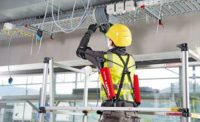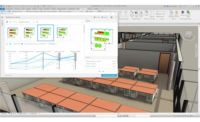Hilti Launches BIM Plug-in for Mapping Out Required Firestops
The growth of BIM, with its densely built models, is driving earlier selection of building products in the construction process. Seeing a chance to get into early specifications, Hilti has introduced Hilti Button, a software plug-in that automatically maps out the firestops required in a building model.
“It saves the time of having to do every penetration one at a time, which is the typical way of doing it,” says Rafael Garcia, vice president of marketing for Hilti. The plug-in is able to detect all the penetrations in the model and assign Hilti firestop products, based on the relevant fire-rating metadata. Compatible with Revit, AutoCAD and Navisworks, it can generate a full breakdown and cost estimate for needed firestops.
The ability to estimate the cost of firestops early in the construction process is the main selling point for the plug-in, says Garcia. “Typically, we know we’ll need some firestops and allocate a budget for work down the road,” he notes. But getting an estimate for that cost earlier helps not only the MEP subcontractor but the project manager, as well, says Garcia. “We can answer these cost questions in the design phase now.”
While the tool can calculate the firestops for a given model, it is only as clever as the data it has. The Hilti Button requires to be included in the model all the relevant fire-rating information and will request any missing information. “That really only happens if you have someone unfamiliar with the software,” says Charlene Schwindt, Hilti’s business unit manager for software. “Unless you’re going in completely blind, it’s just part of the process.”
Getting into software is a shift for Hilti, but, according to Garcia, it’s just the first step in the company’s specifying plug-in for BIM models. He says, “We’ll continue to expand the software with joints. Then, we’ll be dealing with contractors in drywall and curtain-wall space. But, for now, it’s only penetrations and firestops.





